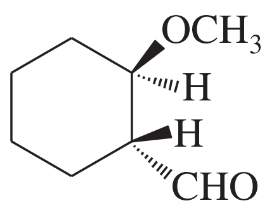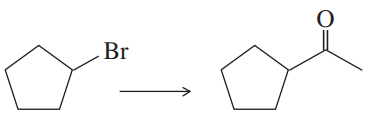 Back
BackProblem 1a
Give the IUPAC name and (if possible) a common name for each compound.
(a)
Problem 1a,b
Draw the structure for each of the following:
a. 2-phenylhexane
b. benzyl alcohol
Problem 1b
Give the IUPAC name and (if possible) a common name for each compound.
(b)
Problem 1c
Give the IUPAC name and (if possible) a common name for each compound.
(c)
Problem 1c,d
Draw the structure for each of the following:
c. 3-benzylpentane
d. bromomethylbenzene
Problem 3
Why were no products from the McLafferty rearrangement observed in the spectrum of butan-2-one (Figure 18-3)?
<IMAGE>
Problem 4d(3,4)
Give the structure of the principal product(s) when each of the following alcohols reacts with (3) DMP and (4) 1 equiv NaOCl-TEMPO.
d. 1-methylcyclohexan-1,4-diol
Problem 6
Show how you would synthesize each compound from starting materials containing no more than six carbon atoms.
Problem 7a
Show how you would accomplish the following synthetic conversions by adding an organolithium reagent to an acid.
(a)
Problem 7b
Show how you would accomplish the following synthetic conversions by adding an organolithium reagent to an acid.
(b)
Problem 7c
Show how you would accomplish the following synthetic
conversions by adding an organolithium reagent to an acid.
(c) pentanoic acid → heptan-3-one
Problem 7d
Show how you would accomplish the following synthetic conversions by adding an organolithium reagent to an acid.
(d) phenylacetic acid → 3,3-dimethyl-1-phenylbutan-2-one
Problem 8
Predict the products of the following reactions.
(c) benzyl bromide + sodium cyanide






